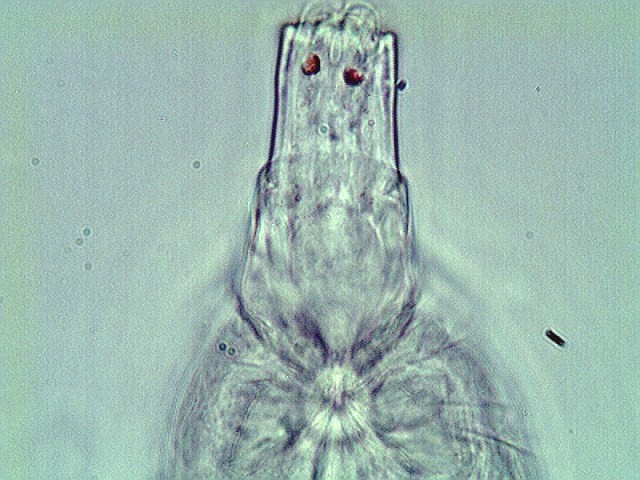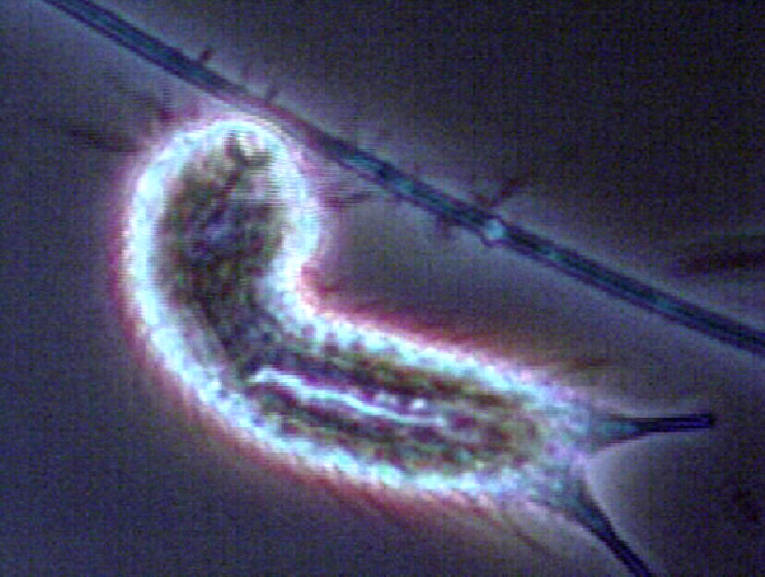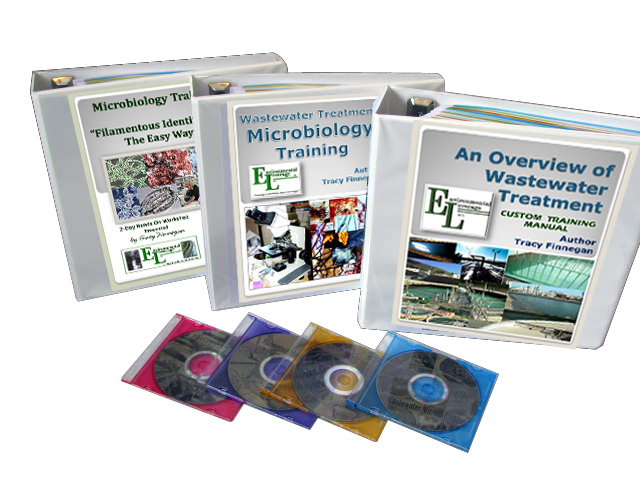Biological Products:
Bioaugmentation products for Wastewater applications in Papermills, Refineries, Chemical, Tanneries, Municipalities, Textiles, Steel, Agriculture, Animal feedlot, Gun Powder plant, Food and Beverage- Dairy Products, Orange Juice factory, Wineries, Cookie factory, Vegetable processing plant, Meat packing, Barbecue Restaurant, Aquaculture, Ornamental Ponds for algae control, CAFO, Nursing homes, Military, Campgrounds, Universities, Regulatory agencies
Lab Services:
Filamentous Identification Lab Service. One reason to identify filaments is to determine the filaments characteristics and then determine the type present. If the type is found out, a root cause can usually be associated with a particular filament. If the cause is known, then a correction can be made to alleviate problems. Chlorination is only a quick fix. Without process changes, filaments will grow back after chlorination. Wastewater Biomass Analyses and Cooling Tower Analyses also available
Training Materials:
Training is an integral part of any job. Not everyone is at the same level of training. Many people want beginning concepts and basics. Some need technical information or troubleshooting. Some want equipment, technology or process information. We have developed a full set of Basic training, Advanced training, Filamentous Identification the Easy Way as well as custom training CD's Manuals. We also provide hands-on training classes and soon will have an Online "E-University".
Audits and Consulting:
At Environmental Leverage® Inc., we have a team of experienced individuals who come into your plant with a fresh pair of eyes. The system is checked from influent to effluent. System optimization, equipment efficiency and operational excellence are key components explored. Key Benefits Equipment efficiency Total Cost of Operation reductions Reliability and safety An onsite audit is conducted to examine system parameters, process controls, and current monitor and control procedures. A physical walk-through is conducted, process flow diagrams are examined, previous design criteria are examined and current standard operating procedures are evaluated along with data logs.
|
Higher life forms or Indicator organisms
What's New!
We now have a brand new "Higher Life Form videos" in our Training CD list. Check out our new Wastewater Training Materials. We are also in the process of developing new courses for our ""Online University" in order to meet the needs of our global customers that cannot travel to our public classes. WastewaterElearning.com/Elearning
We hope you like the new look of our Higher Life forms Identification Pages If you would like more information on bacteria, filaments or higher life forms, you might want to consider purchasing our Wastewater Microbiology Training materials. We also have our lab that can perform a Wastewater Biomass lab analyses of your own MLSS for more information
Higher life forms or Indicator Organisms What really is this called or what does it mean? We have heard both terms depending upon who's text book you look at. This means organisms that indicate the conditions present in your biological wastewater treatment system. Is your system young or old? Are you beating the time and numbers game? Will you have high BOD or low BOD in your final effluent. The types of organisms present in your wastewater treatment system can instantly tell you what is going on in your system.
Stick to the basics, and focus on the causes and controls of the filaments present as well. The main point of any filamentous identification is not to get a PhD, but to fix your plant! Look at the floc, the filaments as well as the higher life forms to tell just how well the microbiology is doing in your wastewater treatment plant.
Below is some wastewater training on the different types of higher life forms that might be present in your wastewater treatment plant. Each type of organism also has addition links to more information on each type of organism, where it is found, how to identify it as well as more photos. Click on the link at the bottom of each section for more information and wastewater training.
Amoebae are single celled microorganisms. Amoebae are motile by pseudopodia, also known as "false feet". Amoebae are divided into two different types, testate and naked. Testate amoebae are those that have shells (or tests) and naked amoeba do not have shells These are the first types of higher life forms to show up after bacteria. They typically indicate a very young system with high BOD. More on Amoeba
Flagellates
Flagellates are single-celled protists with one or more flagella, whip-like
organelles often used for
Like their relatives the amoebae, flagellates are usually present when there are large amounts of soluble food available (high F:M or high BOD). They are found during start up when the sludge is young or after an upset, but will quickly predominate over the amoebae because they are more efficient feeders. They are often found in trickling filter, oxidation ponds, lagoons and activated sludge. Flagellates are one of the few protozoan forms present in sludges that are strongly loaded. Their presence may indicate high soluble BOD levels. Flagellates usually are present in very large numbers during initial start- up of a wastewater treatment plant, during recovery from a toxic discharge to the treatment plant, or at low D.O. levels. If flagellates are present as the dominant protozoan group, this could indicate an unstable wastewater environment and a sludge biomass that is very young. Usually found in low MCRT or low HRT for activated sludge systems. Wastewater Lagoon systems are different and flagellates are often found in lagoons since it is harder to develop an older sludge in a wastewater lagoon with high flows. More on Flagellates
The Ciliates are more complex organisms than the amoebae and flagellates. Free swimming ciliates are covered with cilia, hair-like projections, which are uniform and aligned in rows. The ciliates move and capture food by means of the cilia. Free swimming ciliates are protozoa that are in the phylum Ciliophora. Many different types of free swimming ciliates exist, including "crawling" ciliates".
They are found in various types of water, including freshwater and wastewater. Free swimming ciliates are important because they work with the bacteria. They feed on the bacteria and thus help to clarify the effluent. These can be found during most sludge ages but are dominant during the middle sludge ages. More on Free swimming ciliates.
Stalked ciliates Stalked ciliates are a type of protozoa that can be branched or unbranched. Stalked ciliates are "inverted bell-shaped bodies mounted on a stalk which is attached to a substratum." A key identification feature is the presence of cilia (minute hair-like projections) on the oral region of the organism. Stalked ciliates can be solitary or colonial.
They are one of the higher life forms found in wastewater treatment processes. Stalked ciliates are usually an indication of a stable activated sludge operation. The species of stalked ciliates found can be used to indicate approximate MCRT. The colonial forms of stalked ciliates usually occur at higher MCRTs. Stalked ciliates are found in large numbers when the bacterial population and dissolved oxygen concentration of the treatment process are high, the wastewater environment is stable and a mature floc structure has developed. More on Stalked ciliates.
Suctoria
Rotifers Rotifers are multiple celled organisms that feed on good, stabilized floc. They are highly sensitive to high BOD loadings and toxic shocks. They are typically found in conditions with low F/.M ratios, high MCRT or high MLSS rates. They can reduce turbidity and BOD and control slime growth that can lead to anaerobic conditions. They graze on the floc structure and increase oxygen penetration. More on Rotifers.
Worms Worms are free living macroinvertebrates. They usually indicate very old sludge, high MLSS, low F/M ratios or high MCRT. They crop bacterial populations and recycle nutrients. Nematodes and bristle worms are the most common worms found in wastewater systems. Bristle worms can sometimes indicate high nitrates and turn the entire system pink. More on Worms.
Yeast Yeast are a group of unicellular fungi a few species of which are commonly used to leaven bread and ferment alcoholic beverages. The presence of large amounts of yeast in the wastewater can indicate a low pH, the existence of fermentative conditions, or a severe phosphorous deficiency. Raising the pH above 7 will usually make the yeast disappear. More on Yeast.
Algae Pests or nature's helpers. Algae can be found growing in ponds, lakes, in clarifiers, de-chlorination tanks, etc. More than 10,000 living diatom species are known, there are over 8,000 species of Algae, there are 1500 species of Blue-Green algae or Cyanobacteria, there are 6000 species of red algae or Rhodophyta. More on Algae.
Fungi Fungi are extremely large, non-motile filaments (300-1000 µm). Fungi can often be a cause of bulking. Too much fungi can cause an increase in polymer consumption and make dewatering harder. Fungi thrive in low pH. More on Fungi.
Filamentous Bacteria I don't have filaments at my plant. . . . . .You might want to check again. A common misnomer in many wastewater treatment plants is that unless they have filaments that are bridging and they can see them between the floc structures, they do not have filaments. In reality, internal bulking can cause more problems than slight bridging. Filamentous bacteria are bacteria that grow in strands instead of forming floc structures. More on Filamentous bacteria and the different types.
Tetrads. . . . . Indications that you have nutrient Deficiency, probably nitrogen OK, these are often overlooked and many times you need to be at 400x or 10000x. If you have these in your plant, you probably have serious TSS problems in your effluent. If you see this in your slide under the microscope, it means you need to examine your plant and check for nutrient deficiency, probably nitrogen. Check your influent loading vs. N and P levels. If you are a food plant, check swings on the day shift vs. the night shift. You may have a high TSS or get false BOD readings in your final effluent when these are present. More on Tetrads and nutrient deficient bacteria.
Macroinvertebrates There are many different critters that you will find sometimes in activated sludge or lagoons. Depending upon the age of the system- these also can be seen but are usually not very common or as critical as indicator organisms. You may see Gastrotrich, Water bears, Planaria, Daphnia, Ostracod to name a few. More on Macroinvertebrates.
For more information on Filamentous Identification
If you need more information on our ©Filamentous Identification the Easy Way™ Training CD or on Internet training on Filamentous bacteria, causes and controls. How and why on Wastewater Biomass Analyses
If you would like more information on bacteria, filaments or higher life forms, you might want to consider purchasing our Wastewater Microbiology Training materials. Click this entire sentence for Wastewater Training Material document. We also have our lab that can perform a Wastewater Biomass lab analyses of your own MLSS for more information
How are your bugs doing? ©Filamentous Identification The Easy Way™ - Training program CD Start your way now to a cleaner, brighter effluent with fewer hassles in your waste treatment plant. Wastewater Biomass Analyses Brochure
The Most Comprehensive Filamentous Bacteria Training Program you will find!!! More information
|

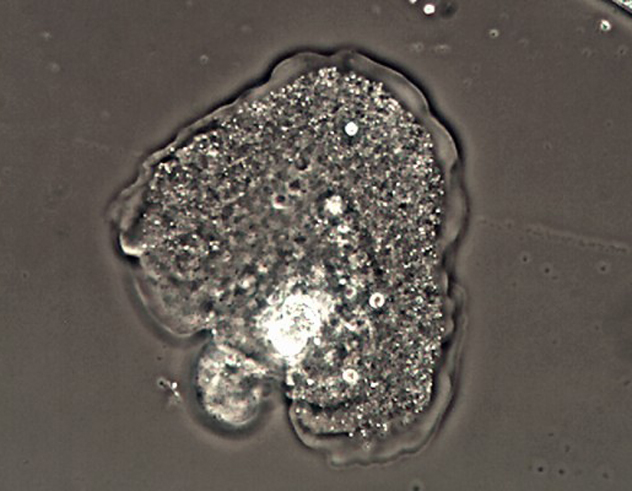 Amoebae
Amoebae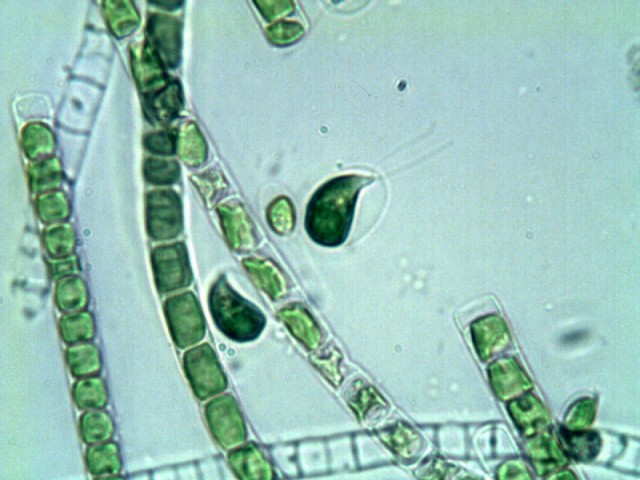 propulsion. The flagella is used for movement
through the liquid. Some flagellates live as colonial entities, while others
function as a single cell.
propulsion. The flagella is used for movement
through the liquid. Some flagellates live as colonial entities, while others
function as a single cell.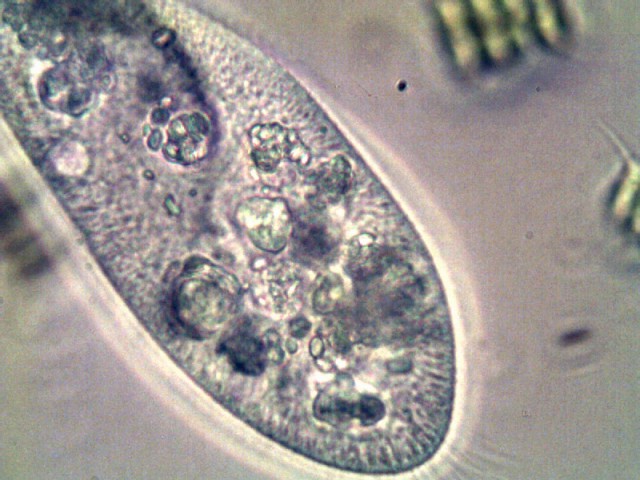 Free swimming ciliates
Free swimming ciliates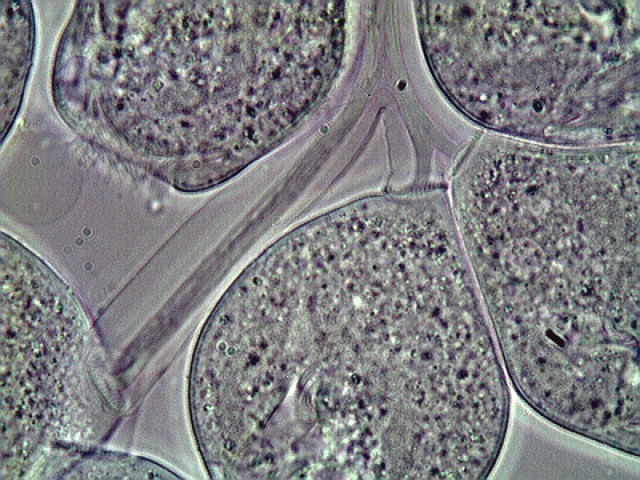
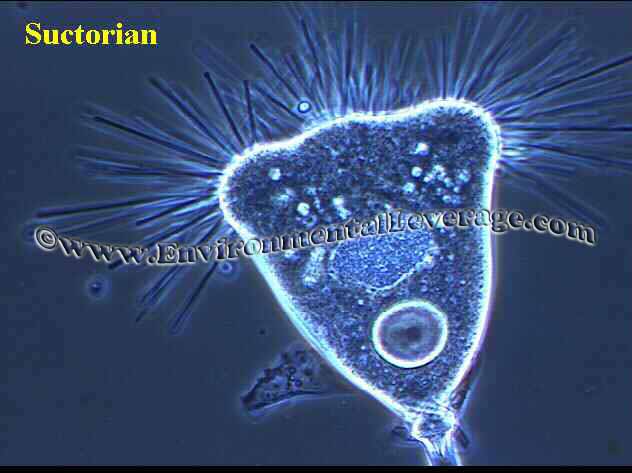 OK, these are the guys to shoot for in most activated sludge plants. They
are called Suctorians. They almost always indicate an extremely healthy
system and usually the BOD in the final effluent is very low, the TSS may
low and things are running smoothly. If you have these in your plant, you
are probably running very good and should congratulate yourselves! The bad
thing is they do not always correlate with filaments. A system with high
filaments can have a low BOD and a very low TSS, yet cause bulking, high
polymer consumption and high solids handling costs.
OK, these are the guys to shoot for in most activated sludge plants. They
are called Suctorians. They almost always indicate an extremely healthy
system and usually the BOD in the final effluent is very low, the TSS may
low and things are running smoothly. If you have these in your plant, you
are probably running very good and should congratulate yourselves! The bad
thing is they do not always correlate with filaments. A system with high
filaments can have a low BOD and a very low TSS, yet cause bulking, high
polymer consumption and high solids handling costs.
